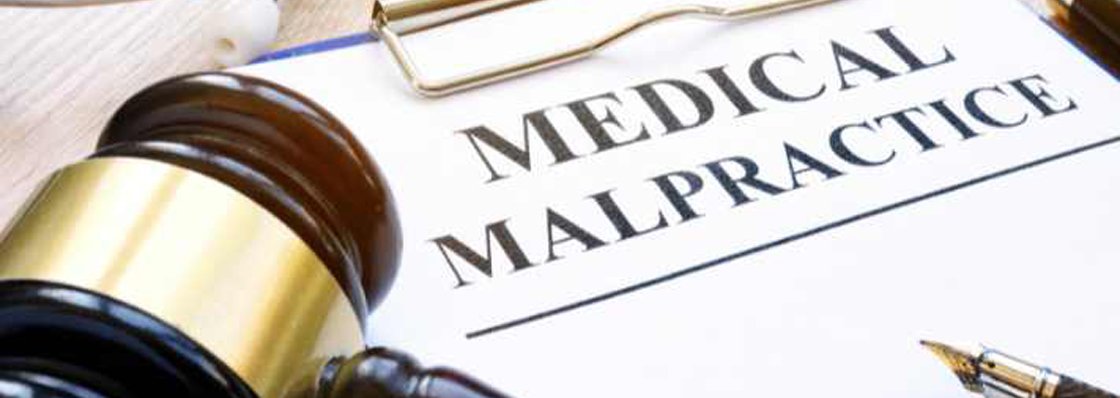Medical Malpractice
Understanding Medical Malpractice in Canada
Medical malpractice is when a medical practitioner—surgeon, physician, or nurse—does not deliver the standard of care for his or her line of work that causes injury or harm to a patient.Such circumstances can occur under a number of conditions such as misdiagnosis, surgical mistakes, medication mistakes, or injuries sustained during birth.
Less than 2% of physicians are defendants in civil court action each year, said the Canadian Medical Protective Association (CMPA). Yet when things turn sour with malpractice, they can be disastrous and, sometimes, permanent for the patient.

Errors That May Result in Claims
1. Misdiagnosis or Failure to Diagnose
Physicians can overlook prominent indications of major disease, e.g., cancer or stroke. If so, treatment delays result in irreparable damage. In order to succeed in a successful case, it should be established that an expert physician would have diagnosed the same under identical conditions.
2. Surgical and Anesthesia Errors
Few operation errors are that obvious that they’re “never events” such as not retracting a surgery instrument from the patient. Both anesthesiologists can also be held guilty if they make the wrong dosing or insufficiently monitor vital signs.
3. Medication Errors
Errors in prescription or drug administration will lead to allergies, overdose, or unwanted reactions. Nurses and hospitals may also be held responsible for these errors, particularly if faulty hospital equipment is used in drug administration.
4. Injuries at Birth
Obstetric malpractice may lead to complications like cerebral palsy, nerve damage, or fractures. These are likely to happen in the event that a physician neglects to arrange a timely C-section, neglects to apply delivery instruments appropriately, or overlooks warning signs during labor.
5. Violations of Informed Consent
Physicians are responsible for disclosing fully to patients risks of any treatment or procedure. In the event a patient is injured by something he was not forewarned about—and would have declined if he had been cautioned—the patient has a right to claim damages.
Legal Conditions for a Malpractice Action in Canada
A claim of medical malpractice, in Canadian tort law, is considered an action for negligence. A patient (the plaintiff) has to prove the following in order to win a case:
- Duty of Care: There ought to have been a professional relationship between the patient and the provider.
- Breach of Standard of Care: The doctor did not act as a reasonably competent practitioner would have acted.
- Causation: Direct harm or injury arose from the violation of standard of care.
- Damages: The patient incurred actual losses—physically, emotionally, or economically.
These factors are usually corroborated by qualified medical evidence, usually from physicians within the same branch of medicine.
Damages for Victims of Medical Negligence
When a malpractice action is successful, the patient might receive economic and non-economic damages:
Economic Damages
- Doctor bills
- Cost of rehabilitation
- Loss of earning
- Future care
Non-Economic Damages
- Pain and suffering
- Mental distress
- Loss of enjoyment of life
Canada lacks the same kind of “tort reform” limits that some U.S. states have, but the Supreme Court of Canada imposed an estimated cap of $100,000 to $400,000 on non-economic damages in most cases.
Suing a Hospital Under Medical Malpractice Law
Hospital liability is a bit more complex. Hospitals are usually only responsible for the behavior of their employees, i.e., nurses, technicians, or administrators. The vast majority of physicians in Canada are independent contractors and not employees of the hospital and therefore personally responsible for what they do.
But according to vicarious liability law, a hospital may be liable when an employee’s negligence occurs within the sphere of work. For instance, when a hospital nurse wrongly prescribes medication through inadequate training or disorganization, the hospital will be held liable.
Expert Testimony: A Critical Factor
Almost all Canadian malpractice claims need expert witnesses—typically another physician—to provide testimony about what was supposed to occur versus what actually occurred. Courts heavily depend on such experts to decide if the standard of care was violated and if it caused harm directly.
Time Limits: Statute of Limitations in Canada
How long you have to file a medical malpractice claim depends on your province or territory:
- In Ontario, the Limitations Act has a general time limit of 2 years from the time that the patient became aware or should have become aware that harm was caused.
- In British Columbia, the time limit is 2 years, but extendable in the case of minors or delayed discovery.
- In Quebec, it’s 3 years under the Civil Code.
It’s always wise to move promptly and seek out a medical malpractice lawyer immediately when you suspect malpractice.
Guarding Patient Rights
Medical malpractice cases are challenging and emotionally taxing, but they’re needed to protect patient safety and professional accountability. If you or a loved one has been harmed by medical negligence, it’s important to speak with a skilled malpractice lawyer trained in your province.
